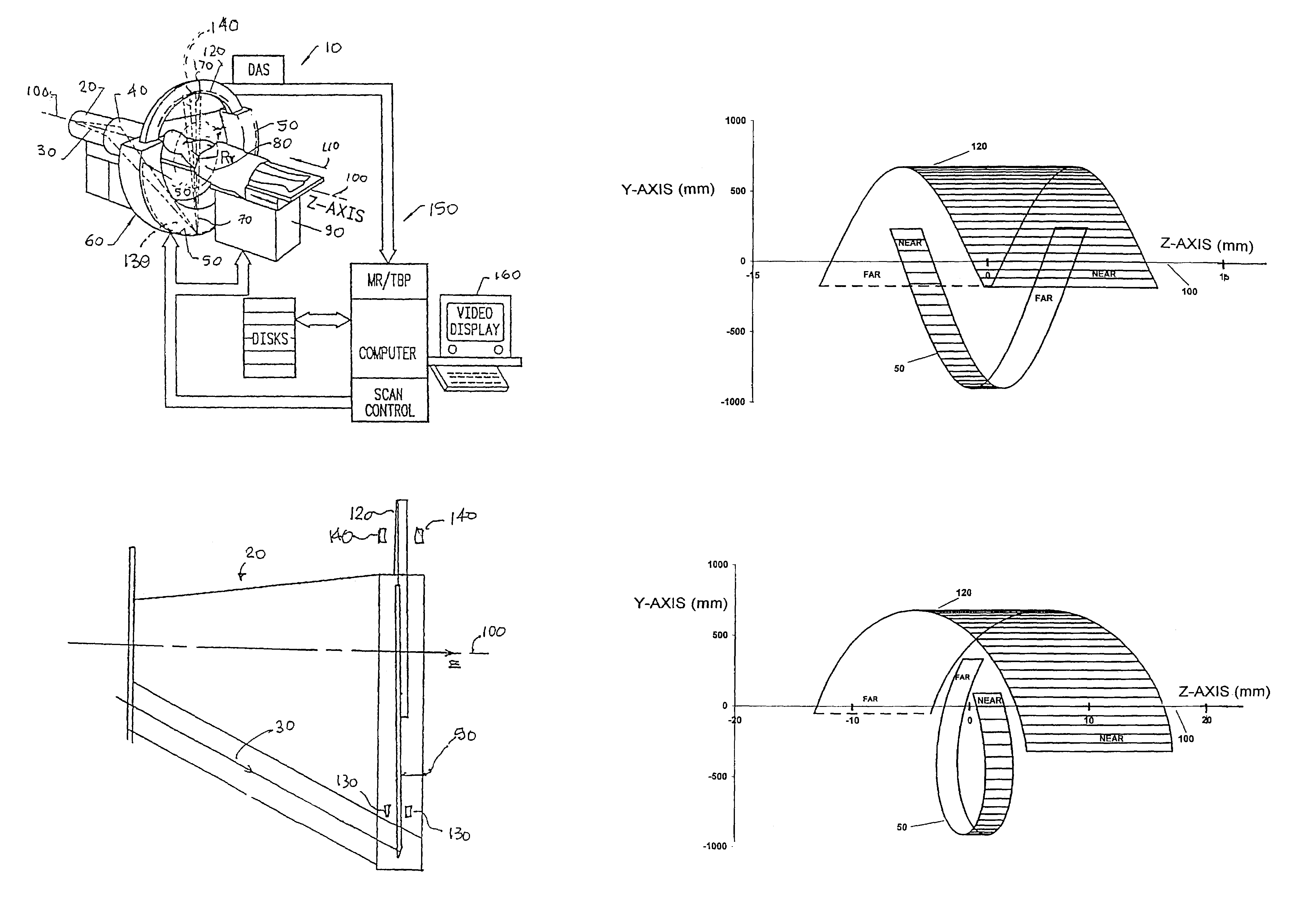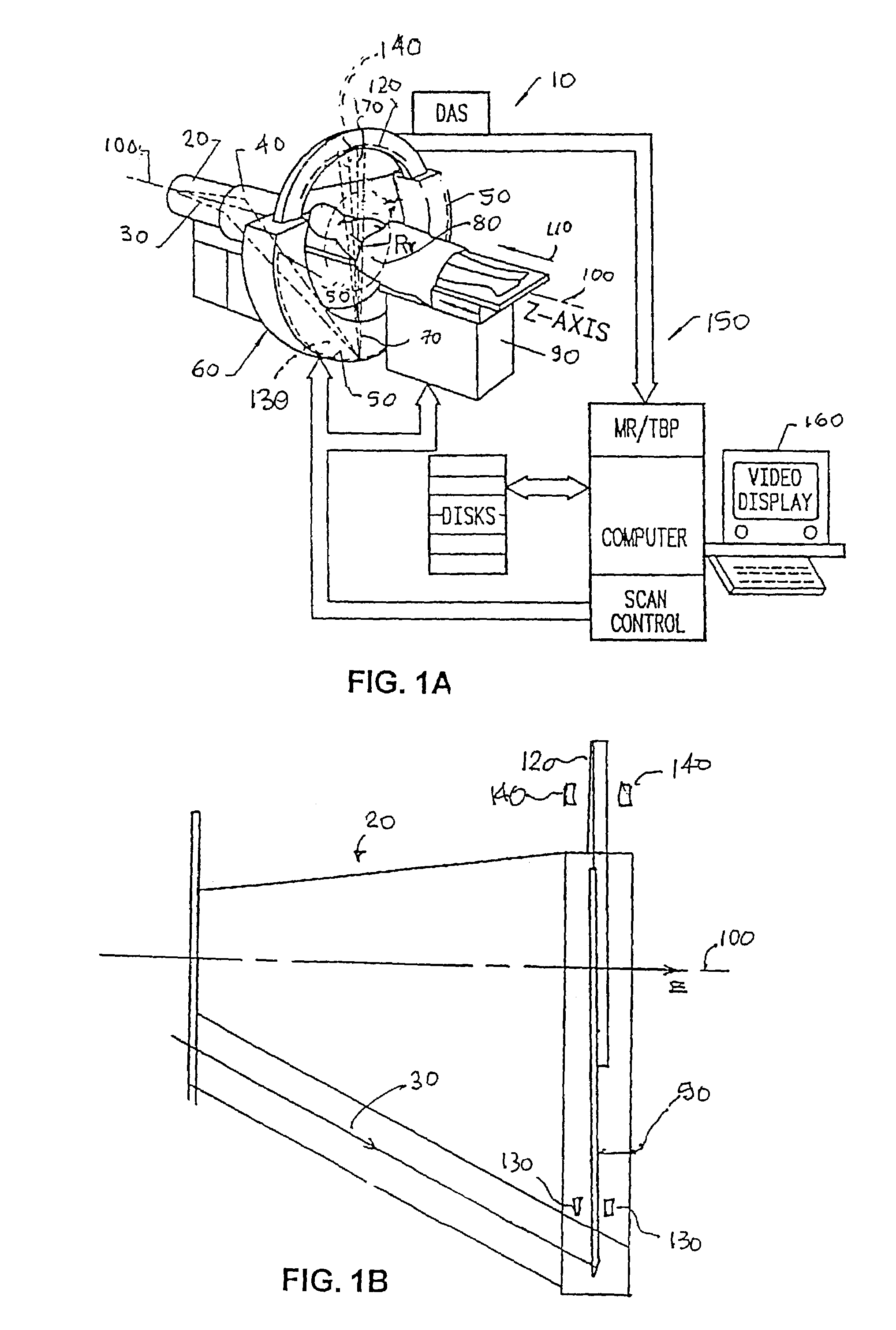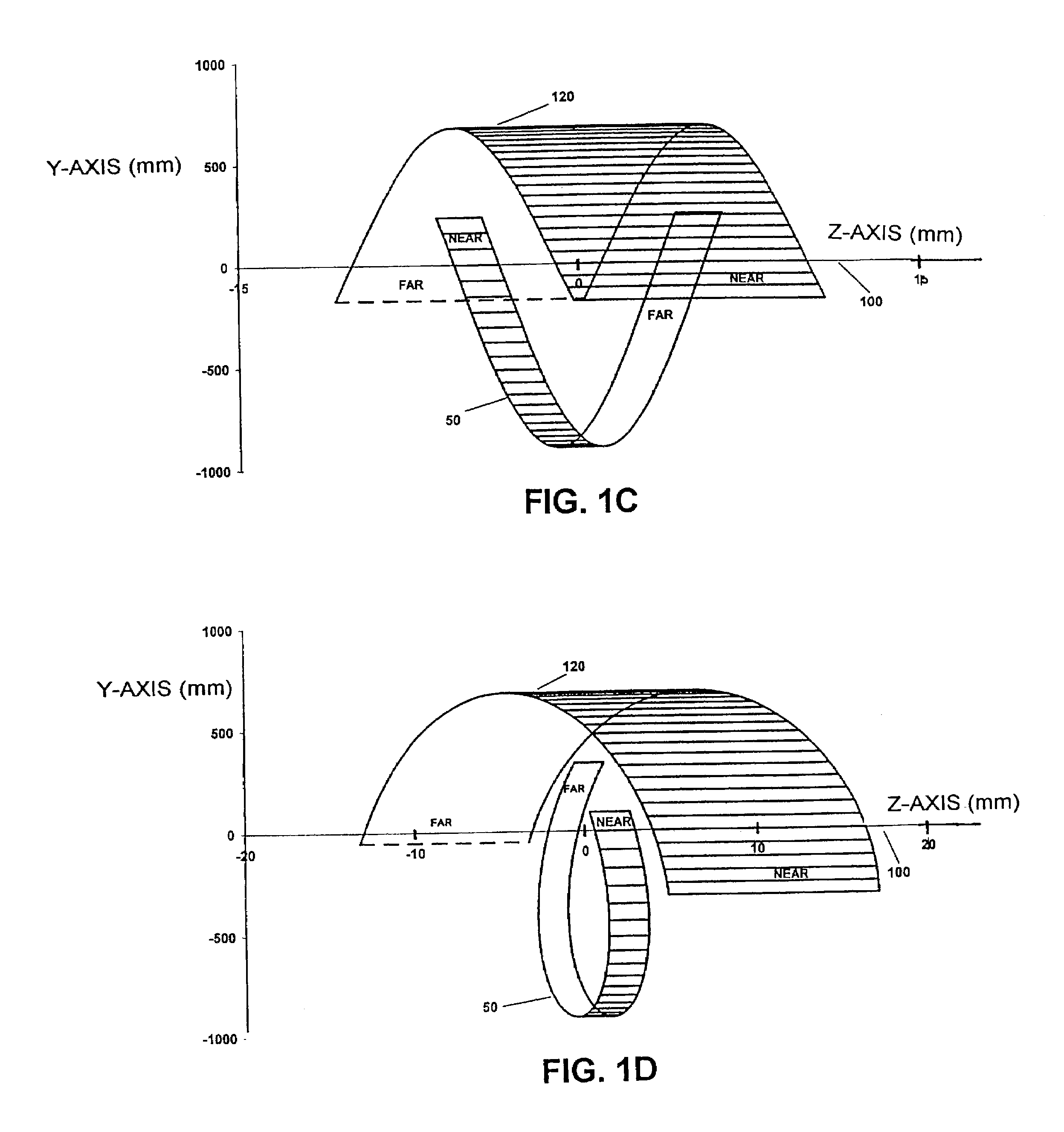Electron beam computed tomographic scanner system with helical or tilted target, collimator and detector components to eliminate cone beam error and to scan continuously moving objects
a computed tomographic and electron beam technology, applied in tomography, material analysis using wave/particle radiation, instruments, etc., can solve the problems of inability to scan stationary objects in isolation unless, inability to scan single slice of stationary objects in isolation, and inability to obtain data so obtained
- Summary
- Abstract
- Description
- Claims
- Application Information
AI Technical Summary
Benefits of technology
Problems solved by technology
Method used
Image
Examples
Embodiment Construction
[0032]FIG. 1A depicts a scanning electron beam computed tomography (CT) system 10 according to the present invention. System 10 includes a vacuum housing chamber 20 wherein an electron beam 30 is generated and caused by a beam optics assembly 40 to scan a circular target 50 located within chamber 20's front lower portion 60. Upon being struck by the electron beam, which typically scans 210° or so, the target emits a moving fan-like beam of X-rays 70 that pass through a region of a subject 80 (e.g., a patient or other object) within the reconstruction radius Rr. Patient or object 80 typically lies on a couch 90 that is movable along the system z-axis 100 at a chosen velocity, as indicated by arrow 110. These rays then register upon a region of a detector array 120 located generally diametrically opposite. System 10 typically includes a collimator system that includes collimator elements 130 adjacent target 50, and collimator-elements 140 adjacent detector array 120. The detector arra...
PUM
 Login to View More
Login to View More Abstract
Description
Claims
Application Information
 Login to View More
Login to View More - R&D
- Intellectual Property
- Life Sciences
- Materials
- Tech Scout
- Unparalleled Data Quality
- Higher Quality Content
- 60% Fewer Hallucinations
Browse by: Latest US Patents, China's latest patents, Technical Efficacy Thesaurus, Application Domain, Technology Topic, Popular Technical Reports.
© 2025 PatSnap. All rights reserved.Legal|Privacy policy|Modern Slavery Act Transparency Statement|Sitemap|About US| Contact US: help@patsnap.com



